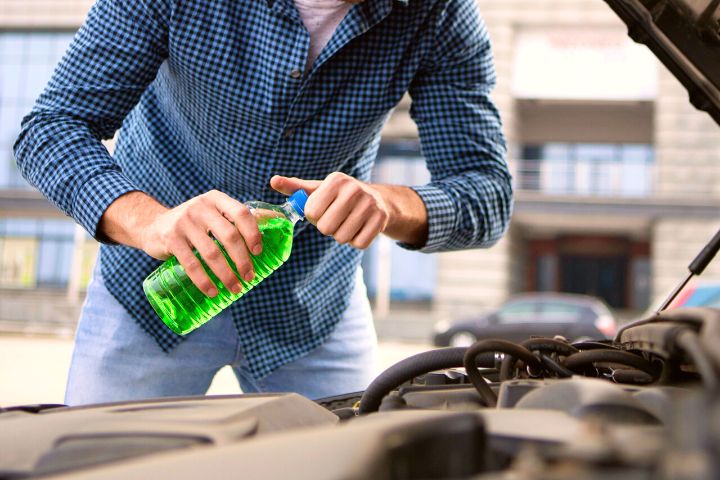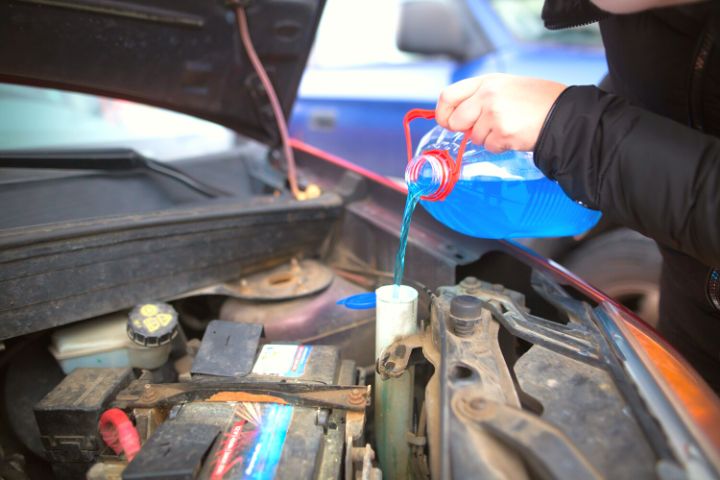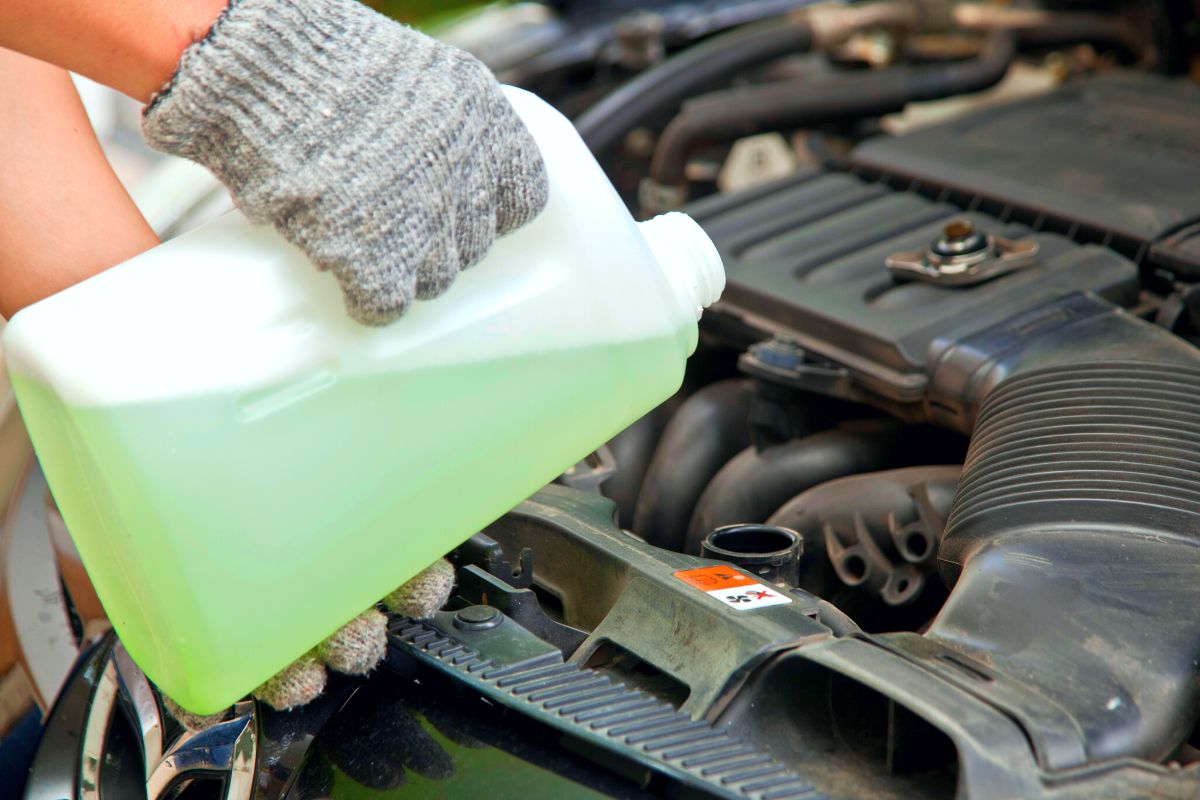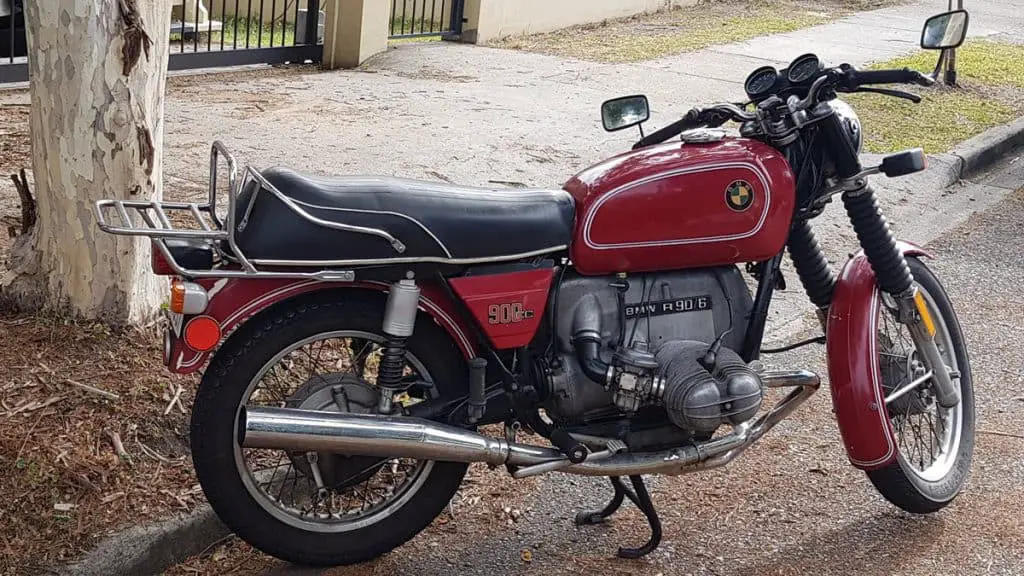Can You Use Car Coolant in a Motorcycle (+ Right Way to Cool Things Down!)
Plenty of newbie riders have one common question: is a motorcycle coolant the same as a car coolant?
The answer isn’t so simple. The fact is, it depends.
There are some major similarities between car coolants and motorcycle coolants, Even so, they may not be the same. So interchanging them without checking isn’t a good idea.
Experts suggest that before using a car coolant in your motorcycle, you should check the ingredients. It should match the coolant specifications recommended by the OEM (Original Equipment Manufacturer).
But that’s not all there is. To use a car coolant on your bike and sleep peacefully at night, you need to check many “ifs”.
That doesn’t answer all your questions, does it?
Yeah, I thought so.
Long story short, your motorcycle engine won’t stop functioning like Superman before a lump of Kryptonite if you pour the wrong type of coolant in it. However, the chances of long-term engine damage are high. The question is, do you want to risk your engine?
Time to dive deeper and learn the facts.
The Function of Engine Coolant and Antifreeze

Let’s look at a fundamental question.
What’s the purpose of a coolant in an engine? (Right now, we are talking about cars as well as motorcycle engines.)
Keep in mind, motorcycles can have liquid-cooled or air-cooled engines. Generally, liquid-cooled engines deliver more power and have better control over internal temperatures.
At the risk of being Captain Obvious, I’m gonna tell you that you need to add or replace coolants only in liquid-cooled engines.
(Seriously, I have a friend who had this idea about replacing the air in air-cooled engines.)
The function of a coolant in an engine is to transfer the heat. It’s a special mixture of ingredients that keeps the engine temperature within the safe range. Additionally, it prevents mechanical damage.
Under extreme heat, metal parts can expand and generate more frictional heat. Unless this heat is carried away by the coolant, the engine components can break apart.
A good coolant needs to be a good thermal conductor to carry away a major chunk of the heat generated by an engine. Besides, it shouldn’t damage the internal components and also reduce metallic corrosion.
After collecting the heat, the coolant loses heat in the radiator and is recycled back to the engine block to regain heat. The cycle continues and, with time, the coolant composition deteriorates. At this point, it’s time to change it.
Now, What About Antifreeze?
For most vehicles, antifreeze and coolants are considered the same. An antifreeze/coolant like glycol used in a coolant reduces the freezing point to protect the engine from sub-zero temperatures. So the coolant will not freeze up in lower temperatures.
The antifreeze also increases the boiling point of the liquid to prevent overheating. In addition to that, coolants also contain corrosion inhibiting compounds and a dye that helps in identification.
Generally, motorcycle coolants are a mixture of antifreeze and water in an equal ratio.
Why not use plain distilled water?
Well, water is an excellent coolant, but it can’t protect the engine from sub-freezing temperatures. Nor can it prevent the corrosion of engine components.
Most motorcycle coolants in the market are water-based as these offer good efficiency at a lower price. However, in extreme conditions like racing, water-free coolants that contain special ingredients are used.

Motorcycle Coolant vs Car Coolant
Warning: this section could be boring. Can’t help it.
Before we discuss the differences, it’s important to understand the common components in a coolant. To start with, let’s look at the two main types of antifreeze that are used.
Ethylene Glycol
This type of glycol has a lower viscosity and excellent heat transfer properties. So it’s used in engines where thermal efficiency is important. Besides, it also has better antifreeze properties and can function at much lower temperatures than propylene glycol. Ethylene glycol is a popular choice as a coolant in the automotive industry.
But there is one major downside. Ethylene glycol is toxic and has various side effects. It can even cause death if consumed. So it needs more care while handling and should be disposed of with extreme caution. Remember, it’s considered hazardous waste.
Propylene Glycol
Propylene glycol is less thermally efficient but it has much lower toxicity levels. However, it’s more commonly used in food and pharmaceutical applications, and HVAC systems. More specifically, it’s used in applications where there’s a higher risk of human or animal exposure.
In most cases, the car or motorcycle coolant will contain ethylene glycol and water, which acts as the base ingredients. However, in case your motorcycle manufacturer uses a coolant that contains propylene glycol, stick to that.
But that’s not all…

A coolant contains other components like corrosion inhibitors, dyes, antifoams, and various additives. While these are present in small percentages, they can make a big difference in the way a coolant performs inside the engine. And the composition of these compounds will vary between coolants.
Take corrosion inhibitors, for example. In conventional coolants, these are the oxides of silicates and phosphates that form a protective layer on the metal parts. The purpose of the inhibitors is to keep the coolant solution alkaline and prevent acidic corrosion of the metal parts.
On a side note—that’s why a coolant acidity check is a good indicator to find out if it needs replacement.
Any traditional “green” coolant (green due to the color of the dye used in it) you use in a vehicle will contain these compounds. However, many brands are offering “orange” antifreeze that lasts longer than the “green” antifreeze.
The new-age coolants use organic acids that have a longer shelf life than inorganic compounds like silicates, phosphates, and borates. Such a composition can give them a service life of five years or more.
In addition, there are antifreeze solutions of other colors too that are used in specific vehicles.
Since the chemical compositions are different, coolants of different colors should not be mixed together. By doing that, you might end up with a chemical reaction that gums up the motorcycle engine cooling system.
So Why Am I Telling You All This?

Motorcycle engines can contain seals made from silicone or rubber. The organic acids in an “orange” antifreeze specified for a car can lead to the degradation of these materials.
Once these seals get damaged, the coolant can leak into the engine lubrication oil system and affect its performance. In the long run, this can lead to damage to the engine components.
Moreover, they can also cause increased deposit formation that can affect the engine performance.
And you know what else?
Some studies have suggested that silicate content in some car coolants can also have a negative effect on the corrosion protection properties of aluminum surfaces. So motorcycle engine components made from aluminum can be adversely affected.
Quite simply, without checking the chemical compatibility of a car coolant with your motorcycle engine, you can’t use it. Even using two green coolants from different brands can be risky.
News flash: the same coolant color doesn’t mean the same formulation.
Long story short, your motorcycle engine won’t stop functioning like Superman before a lump of Kryptonite if you pour the wrong type of coolant in it. However, the chances of long-term engine damage are high. The question is, do you want to risk your engine?
Ok. I got it.
Can you use car coolant for motorcycles? Strictly not.

Well, not necessarily.
As I said, the best way is to check the coolant specifications listed in the motorcycle’s manual. If someone knows what’s best for your engine, it’s the manufacturer.
Compare the coolant requirements with the ingredients mentioned by the coolant producer. If the car coolant matches all the specifications, you can use it. Otherwise, choose a coolant that contains the right chemicals.
Frequently Asked Questions
Is motorcycle coolant the same as car coolant?
In terms of the primary components, both the types of coolant are mostly the same. However, there can be a difference in the secondary components which can have an effect on the engine.
What color is motorcycle coolant?
Motorcycle coolants are available in a rainbow of colors. However, the most common color of motorcycle coolants is green. In reality, it isn’t the color of the coolant, but its chemical composition that matters.
Do motorcycles need special coolant?
Motorcycles don’t need any special coolants unless you are heading for a racing track. The best option is to stick to the coolant recommended by the manufacturer.
Can you put car coolant in a dirt bike?
Yes, you can put a car coolant in a dirt bike. However, don’t just pour any car coolant into the engine. Make sure that the coolant’s chemical composition is the same as mentioned by the bike manufacturer.






